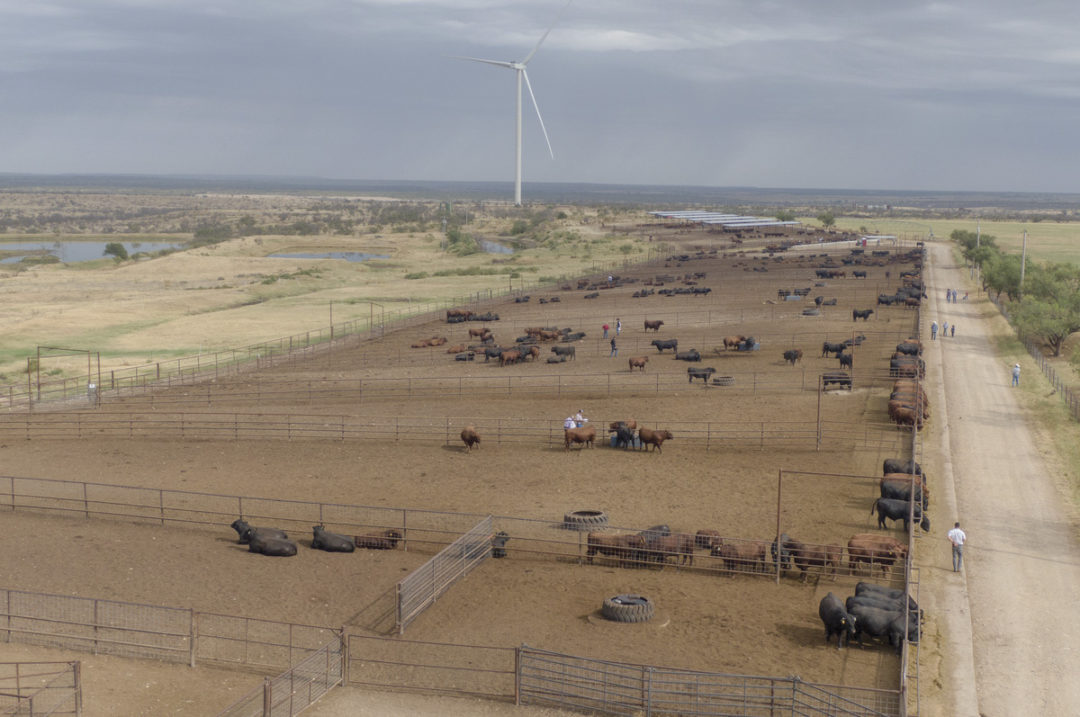By definition, to “cooperate” means to work jointly toward the same end. This is the idea when it comes to the development of cooperator cattle herds. Cooperator systems in the cattle industry are comprised of two parts – the nucleus herd and the cooperator herds.
“A traditional cooperator involves a nucleus herd, or host, who already has an existing customer base and would like to expand their sale offerings,” says Marty Ropp, owner of Allied Genetic Resources. “It takes a lot of money to expand, particularly with cattle, so they work with somebody who has the capability of producing the bulls or females and who already owns their business and has some experience raising cattle, considered a ‘cooperator herd.’”
One segment of Ropp’s business is to help people expand their marketing capabilities, and a cooperator system is one of the models that works for this. The cooperator system is a very effective way to grow your business and take advantage of people’s specializations, Ropp says. Some people are better at some things than others. This system recognizes that and allows people who can produce cattle to produce cattle and those who can sell cattle to sell cattle.
“By dividing and conquering, we are able to do what we do best as a team of individuals and join forces in areas where we complement each other,” says Donnell Brown, fifth-generation rancher on his family’s R.A. Brown Ranch in Texas.
R.A. Brown Ranch is a large and well-known operation that implements the cooperator herd system. Donnell Brown and his wife, Kelli, came back to the ranch after college with the idea of developing a cooperator system to be able to add bulls to their annual sale without having to purchase additional land and cows to do so.
“When Kelli and I came back to the ranch, we wanted to buy cows and grow our herd, but the market was high and therefore not a wise time to invest in cattle," Brown says. “So instead, we chose to invest in people and began our cooperator system that allows outstanding breeders to focus all of their efforts on producing top-quality genetics and allow us as the nucleus herd to take care of all their bull development, marketing and customer service."
R.A. Brown Ranch serves as the nucleus herd to now 40 cooperator herds that are producing some of the best cattle in the country, Brown says. They consider themselves a team, all working toward similar goals.
The Browns developed a very successful cooperator system, working with some cooperators now for over 20 years. Not all cooperator systems are this successful. Additionally, not all cooperator herds stay in the cooperator system for that long, either. Clear communication with all involved in the system is one thing many agree has led to the success of the Browns' cooperator system.
 Producers in the cooperator herd send their bulls to R.A.
Brown Ranch where they prepare and market them for the sale. A lot of
trust and communication make the host and cooperator relationship
strong. Photo provided by Donnell Brown.
Producers in the cooperator herd send their bulls to R.A.
Brown Ranch where they prepare and market them for the sale. A lot of
trust and communication make the host and cooperator relationship
strong. Photo provided by Donnell Brown.
Communication is key
The cooperator system works great with a high degree of communication, says Mike Henderson, owner and operator of Advanced Beef Genetics in Iowa, an R.A. Brown Ranch cooperator herd. Understanding the expectations and end goals and working together as a team to hit them is the reason they all are in the cooperator system.
“I think, in any cooperator-type relationship, understanding the roles and responsibilities we each have is really important,” Henderson says. “We entered into an agreement knowing that because of how we're structured in our operation, we didn’t have time to be great at all the things it takes to produce cattle and to put on a sale. We knew we had a passion for the genetics and the challenge of raising and developing better cattle, OK. But we knew that we weren't going to have the time to invest in the development of bulls, the marketing, developing customer relationships and everything to put a sale together. We knew we had a passion for the production, so we identified our roles as doing a great job in that.”
Producers take a risk by sending their cattle to the host, says John Kleiboeker, owner and operator of Clover Creek Farms in Missouri, an R.A. Brown Ranch cooperator herd. The relationship between the host and cooperator must be built on trust.
“I think there's a level of respect and integrity within a cooperative group that's second to none,” says Chuck Miller, owner and operator of Miller Cattle Company in Missouri, another R.A. Brown Ranch cooperator herd.
The cooperator system only works with the right people. It’s like selecting a spouse, Brown says. For many of our cooperators, raising cattle is not their number one source of income. But for nearly every one of them, it's their number one passion, he adds.
“The bottom line is, it has to be a financially good idea for both parties involved,” Ropp says.
 R.A. Brown Ranch implements a cooperator herd system with over 40
cooperator herds currently involved. The herds produce bulls for sales held twice a year. Photo provided by Donnell Brown.
R.A. Brown Ranch implements a cooperator herd system with over 40
cooperator herds currently involved. The herds produce bulls for sales held twice a year. Photo provided by Donnell Brown.
A collaboration that works for all involved
Cooperator systems developed from a combination of ideas from consignment sales and central bull tests, Brown says. Many of the large bull sales have a cooperator system in place.
“I'm absolutely convinced that this type of arrangement is going to allow smaller seedstock producers, like my family, to remain in the seedstock business,” Kleiboeker says. “As technology continues to advance, the ability for just one person to be able to stay on top of it all, and do it all really well, is almost impossible. With this arrangement, I can focus on where my heart really is – in the genetic decision-making, breeding, daily care, land and pasture management and so forth – and Donnell and Kelli can focus on the thing that they're really good at, which is the bull development and marketing aspect.”
It's important for producers who are considering entering a cooperator system to realize they will be giving up some of the autonomy and independence they may have outside the cooperator system. While this is not a bad thing, it does take a little bit of a change of mindset, Ropp says. They will be asked to give up some of their decision-making, but the host herd chose them for a reason, he adds. The skills of the cooperator are still very important for the success of the relationship.
“In order to be successful, both sides have to give a little,” Ropp says. “The cooperator must be willing to give up significant decision-making and depend on the trust-based relationship with the host herd. But as long as both groups work toward each other's success, it can be a very rewarding relationship.”
While the cooperators work on the production side, the host works on building customer and industry relationships, watching the market and industry trends, developing and marketing the bulls or females, and planning the sales.
“As a group, we can do so many things that as a single individual, we could not," Miller says. “You can have some huge successes within a cooperative group.”
It is difficult for a single individual to compete with larger entities, but as part of a group, it's possible to do so. “In this system, we all grow stronger because we're working together,” Brown says. “We join forces in areas where we complement one another.”











